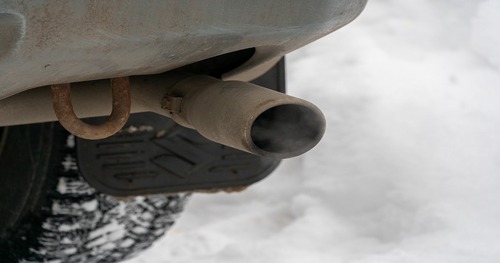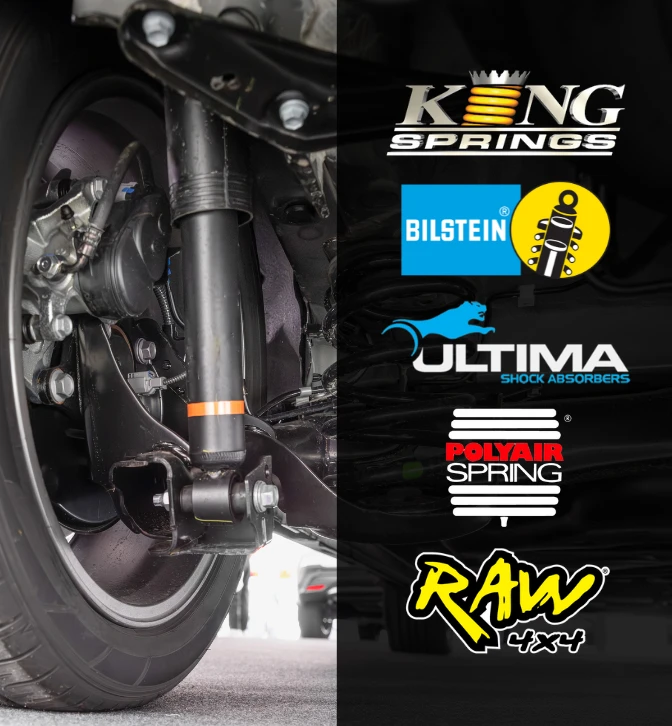-
Exhaust
- Back
- Exhaust
- Performance Exhaust Systems
- Standard Replacement Exhaust Systems
-
Exhaust Accessories
- Exhaust Bolts, Nuts & Studs
- Clamps
- Collectors
- Exhaust Reducers & Couplers
- Exhaust Tips
- Flange Plates
- Exhaust Flex Bellows
- Exhaust Brackets & Hanger Rods
- Gaskets
- Heat Tape
- Mandrel Bends
- O2 Sensors & Exhaust Temperature Sensor Accessories
- Paint
- Muffler & Exhaust Mounting Brackets
- Tube
- X & Y Pipes
- All Exhaust Accessories Products
- Catalytic Converters
- DPF Filters
- Exhaust Extractors / Headers
- Universal Mufflers & Hotdog Mufflers
- All Exhaust Products
![Exhaust]()
- Suspension
- Performance
- Towing
- Filters
- Truck
- On Sale
- About Us
- Blog
- Contact Us
What Does White Smoke Coming from Your Exhaust Mean?
Date Posted: 18 April 2024

Have you ever turned the key in your ignition, only to be greeted by a plume of white smoke billowing from your exhaust? The sight can set off alarm bells ringing louder than a fire truck on an emergency call. So, what does white smoke coming from your exhaust mean?
Sometimes it’s simple - it’s essentially your car saying good morning on a cold day. But other times, it’s due to issues lurking under the hood - problems that could range from minor inconveniences to wallet-draining repairs. The hue of that smoky signal holds clues, so let’s discuss what you should do if you see white smoke coming from your exhaust.
What Should You Do if You See White Smoke from Your Car's Exhaust?
Seeing white smoke billowing out from your car’s exhaust pipe can set off alarm bells in your head. But let’s hit pause on the panic button and break it down. White smoke is like your car trying to send you a message, and decoding this smokey signal is crucial. So, what does white smoke coming from your exhaust actually mean?
- If it happens during startup on a cold morning and quickly disappears, breathe easy; it's likely just condensation evaporating through the exhaust system - a normal part of waking up for many cars.
- If that puff turns into consistent clouds following you around town it could signify something more serious like coolant finding its way into places it really shouldn't be.
Recognising the distinction between these situations enables us to discern if our car is simply warming up or sending out an SOS. The colour spectrum doesn’t end at white either; there’s also black and blue smoke each telling their own tale about what goes on under the hood.
- Black smoke often points to fuel being burned too rich and might call for checking those fuel injectors or air filters.
- Smoke with a blueish tinge could indicate oil burning alongside fuel, which suggests oil leaks into combustion chambers due to worn engine components.
Tackling these smokescreens starts with identifying which type has taken up residence in your rearview mirror. If white clouds persist beyond the initial start-up or intensify upon acceleration, consider investigating further - an early chat with your mechanic could prevent turning those misty messages into full-blown fog warnings within vital parts like cylinder heads or gaskets.
Common Causes Behind White Smoke Emission
Coolant Leaks
A coolant leak is the most common cause of white smoke coming from your exhaust. This isn't just about losing that precious green fluid but changes the game inside your engine. When coolant finds its way into places it really shouldn't be, like the combustion chamber, it gets burnt up along with fuel. This produces a telltale plume of white smoke from your exhaust pipe – a clear signal something's amiss under the hood.
The Role of Engine Components in Smoke Production
Let’s dive deeper into our engines to uncover more culprits behind that pesky white smoke.
- Head Gasket: Ensuring the head gasket remains intact is crucial, as it acts as a barrier that confines oil and coolant to their respective zones within the engine's anatomy. If this seal breaks or wears out you can get a coolant leak and potentially serious damage to your engine.
- Cylinder Head & Engine Block: These aren’t just big chunks of metal; they're integral parts of your vehicle’s heartland where combustion happens. Cracks here are bad news because they allow coolant to seep into areas meant exclusively for air and fuel mixture leading to... you guessed it: white smoke.
Diagnosing a Blown Head Gasket
If your coolant seems to be disappearing into thin air without any visible leaks on the ground where you park, guess what? It might actually be going somewhere - right into your engine's combustion chambers through tiny breaches in a failing head gasket. Check under that oil cap. If what was once golden is now looking more like latte froth, milky and murky, then water and coolant are making their way into places they really shouldn’t be. That’s bad news for engine health.
Then, do you notice bubbling sounds or see bubbles forming in your radiator or coolant reservoir when the engine is running? That could mean gases from faulty combustion processes are finding their way back there due to a blown head gasket. Finally, keep a close eye on your engine temperature. Extreme overheating is another indicator that points toward something bad happening under the hood, like a blown gasket.
No one wants to deal with the possibility of having to replace an entire component, but sometimes you have to bite the bullet. By spotting the signs early, you stand a fighting chance of keeping costs at a minimum, not to mention sparing yourself the heartache of a full-scale breakdown on the road.
The Implications of a Cracked Engine Block or Cylinder Head
The signs of a cracked engine block or cylinder head, just like with a blown gasket, are unexplained coolant loss, overheating engines, and if you're really unlucky, white smoke billowing like an SOS signal from your exhaust pipe. Unfortunately, resolving this issue is much more costly than dealing with a blown gasket. Luckily, an engine block or cylinder head cracking is rarer than issues with the gasket.
Oil Leakage and Its Contribution to White Smoke
An oil leak, leading to burning oil, often sends out blue-tinted smoke which could seem like white smoke if you aren’t paying close attention. As we mentioned, white smoke coming from your exhaust is typically caused by a coolant leak. If you are burning oil faster than anticipated and see bluish smoke coming from your exhaust, don’t just top up and hope for the best. An unaddressed oil leak can escalate quickly.
Fuel System Issues that Lead to White Smoke
Fuel system issues, such as a malfunctioning injector or a clogged fuel filter, disrupt the precise balance of air and fuel required for combustion. When this balance is disturbed, incomplete combustion occurs, leading to the production of white smoke from the exhaust. A faulty injector may spray too much fuel into the combustion chamber, while a clogged fuel filter restricts fuel flow and both result in poor combustion efficiency.
Additionally, an Incorrect fuel mixture caused by a malfunctioning oxygen sensor or faulty mass airflow sensor can disrupt the optimal balance of air and fuel for combustion. A lean fuel mixture (i.e., insufficient fuel relative to air) can lead to incomplete combustion, producing white smoke from unburned fuel particles. Conversely, a rich fuel mixture (i.e., excessive fuel relative to air) can overwhelm the combustion process, resulting in white smoke due to partially burned fuel. Addressing sensor issues or airflow problems restores the proper air-to-fuel ratio, ensuring complete combustion and eliminating white smoke emissions from the exhaust.
Promptly Addressing Problems
As we said, white smoke coming from your exhaust doesn’t have to be an exhaust system issue if it sometimes happens on startup and disappears. However, it could also be happening due to a whole host of other factors, some of which can be extremely damaging and costly to repair if left unchecked. At the very least, if you do see white smoke, keep tabs on your coolant levels and go to a mechanic if they drop.
Going Above and Beyond
While you’re dealing with white smoke coming out of your exhaust, why not also improve your car’s performance instead of just keeping it running? If that’s something you're interested in, check out Perform-Ex Auto. We sell high-quality aftermarket parts at affordable prices and that includes performance exhaust upgrades. Feel free to contact us and let's see if we can help you resolve any issue you have.
Leave a comment







